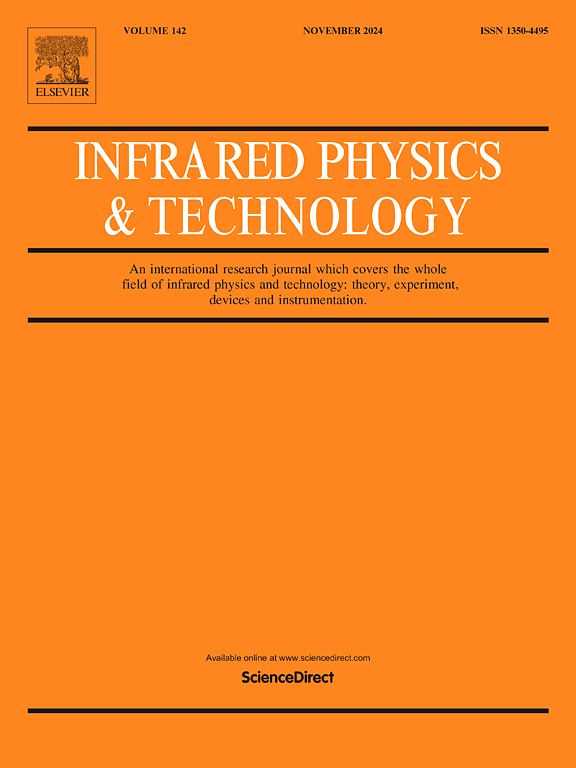Based on time and space phase compensation algorithm for GM-APD photonic coherent lidar detection
IF 3.1
3区 物理与天体物理
Q2 INSTRUMENTS & INSTRUMENTATION
引用次数: 0
Abstract
When detecting rough surface targets with a photon coherent lidar system, the wavelength of light is significantly smaller than the height of the surface roughness. This discrepancy induces decoherence effects, which degrade heterodyne efficiency and reduce the signal-to-noise ratio (SNR). To mitigate these challenges, we propose a time and spatial phase compensation signal processing algorithm. In this method, the spatial phase compensation algorithm is first applied to address the issue of phase inconsistency in the array detector signals. Subsequently, to handle the phase mismatch across multiple frames of the GM-APD signals, a time-phase compensation algorithm is employed to align the phases of the multi-frame signals. Finally, the signals are accumulated in the time domain across multiple frames to obtain the final processed signal. A spatial photon coherent lidar system was established to detect four different targets. The application of this algorithm results in a significant improvement in the SNR, with the maximum increase reaching approximately 14.43 dB and the minimum increase at around 8.45 dB. This research lays a solid foundation for the detection of non-cooperative targets in field conditions using photon-coherent lidar systems.
基于时空相位补偿算法的GM-APD光子相干激光雷达探测
光子相干激光雷达探测粗糙表面目标时,光的波长明显小于表面粗糙度的高度。这种差异会引起退相干效应,从而降低外差效率并降低信噪比。为了缓解这些挑战,我们提出了一种时间和空间相位补偿信号处理算法。该方法首先采用空间相位补偿算法来解决阵列探测器信号相位不一致的问题。随后,为了处理GM-APD信号的多帧相位失配问题,采用时相补偿算法对多帧信号的相位进行对齐。最后,将信号在时域内跨多帧累加,得到最终处理后的信号。建立了一种空间光子相干激光雷达系统,用于探测四种不同的目标。该算法的应用使信噪比得到了显著提高,最大增幅约为14.43 dB,最小增幅约为8.45 dB。本研究为利用光子相干激光雷达系统在野外条件下检测非合作目标奠定了坚实的基础。
本文章由计算机程序翻译,如有差异,请以英文原文为准。
求助全文
约1分钟内获得全文
求助全文
来源期刊
CiteScore
5.70
自引率
12.10%
发文量
400
审稿时长
67 days
期刊介绍:
The Journal covers the entire field of infrared physics and technology: theory, experiment, application, devices and instrumentation. Infrared'' is defined as covering the near, mid and far infrared (terahertz) regions from 0.75um (750nm) to 1mm (300GHz.) Submissions in the 300GHz to 100GHz region may be accepted at the editors discretion if their content is relevant to shorter wavelengths. Submissions must be primarily concerned with and directly relevant to this spectral region.
Its core topics can be summarized as the generation, propagation and detection, of infrared radiation; the associated optics, materials and devices; and its use in all fields of science, industry, engineering and medicine.
Infrared techniques occur in many different fields, notably spectroscopy and interferometry; material characterization and processing; atmospheric physics, astronomy and space research. Scientific aspects include lasers, quantum optics, quantum electronics, image processing and semiconductor physics. Some important applications are medical diagnostics and treatment, industrial inspection and environmental monitoring.

 求助内容:
求助内容: 应助结果提醒方式:
应助结果提醒方式:


